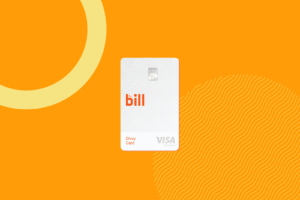The big day is approaching, and you’re finally getting ready to head to the cruise port and board your ship. How can you ensure you’re prepared to start your vacation on the right foot? You’ll need a plan for getting to the port and some knowledge about the embarkation process, including your cruise ship boarding time.
Before the COVID-19 pandemic, cruise lines would often allow passengers to show up at the terminal on embarkation day whenever was convenient for them within a half-day window.
In the aftermath of the pandemic, lines began assigning boarding times to passengers or, more commonly, asking them to choose the window of time that they’d prefer in order to stagger the crowds. The new method has worked so well that there’s a good chance it will remain in place.
But what time do cruises board, and is there a best time to board a cruise ship? Read on to find out the answers, as well as when you should plan to arrive in your departure city before you set sail.
For more cruise news, guides and tips, sign up for TPG’s cruise newsletter.
When to arrive for a cruise
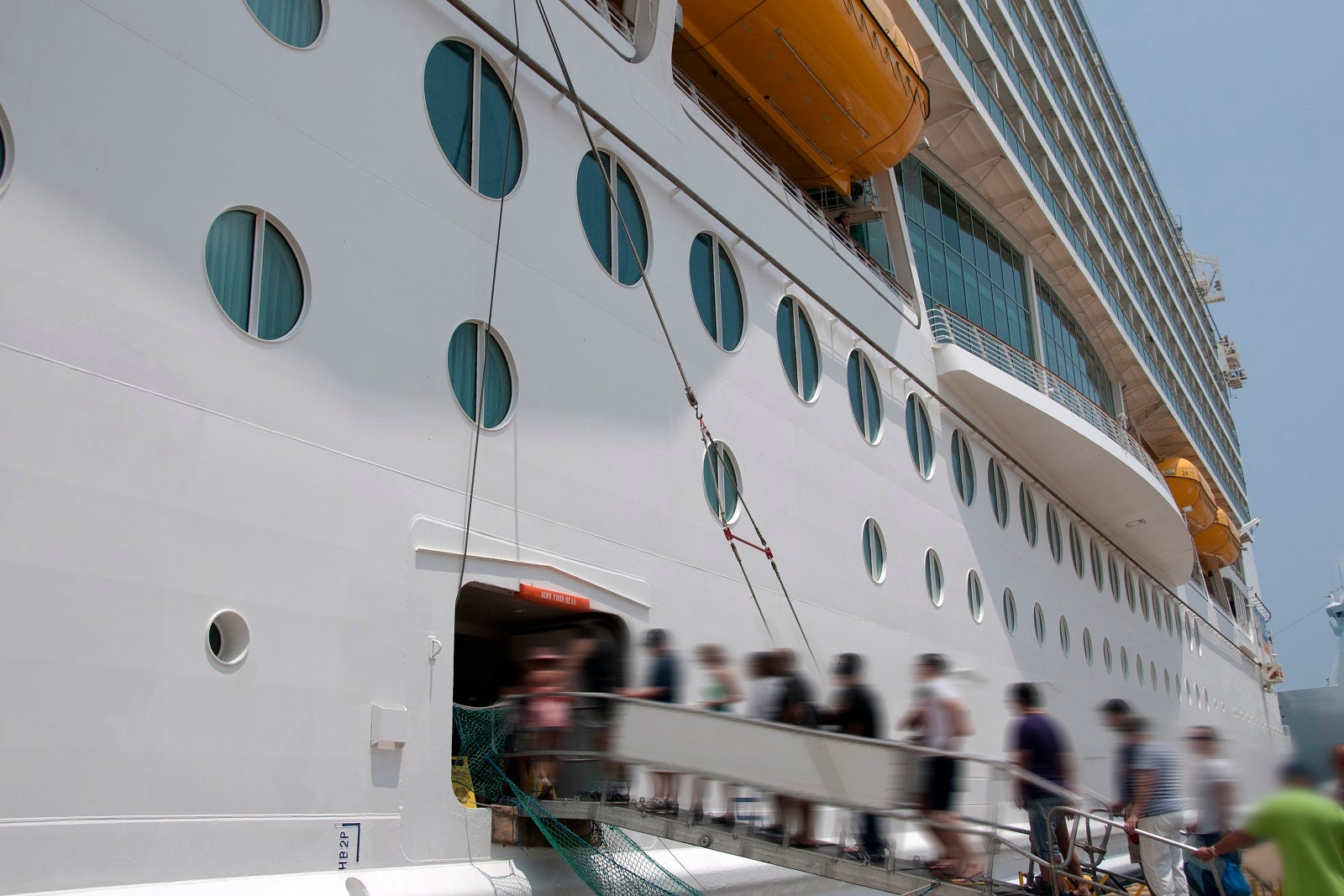
Ask “when should I arrive for my cruise?” and you likely mean one of two things: When should you arrive in your ship’s departure port city before your sailing or when should you arrive at the cruise terminal on embarkation day?
The answer to the first question depends on how far of a commute you have to the cruise port. If you live within driving distance of your departure port, it’s acceptable to make your way there the same day your ship leaves — unless you’re looking at a multi-hour ride and don’t want to cut it too close to boarding time.
If you’re catching a plane, when to fly in for your cruise depends on several factors. I always advise flying in at least one day before you’re scheduled to embark, just in case you encounter any delays or cancellations. That way, you have time to rebook yourself on a different flight if something goes wrong.
Related: Should I buy my flights through my cruise line
However, adding the cost of a pre-cruise hotel stay onto the overall bill isn’t always doable for every traveler, especially those on tight budgets. If that’s the case and you can find a super-early flight that gets you to your port city with some wiggle room, flying in the same day you sail is totally possible.
Either way, I recommend purchasing travel insurance (through a third party, not through your cruise line) that will protect your investment if something happens and you miss your ship.
What time do cruise ships board?
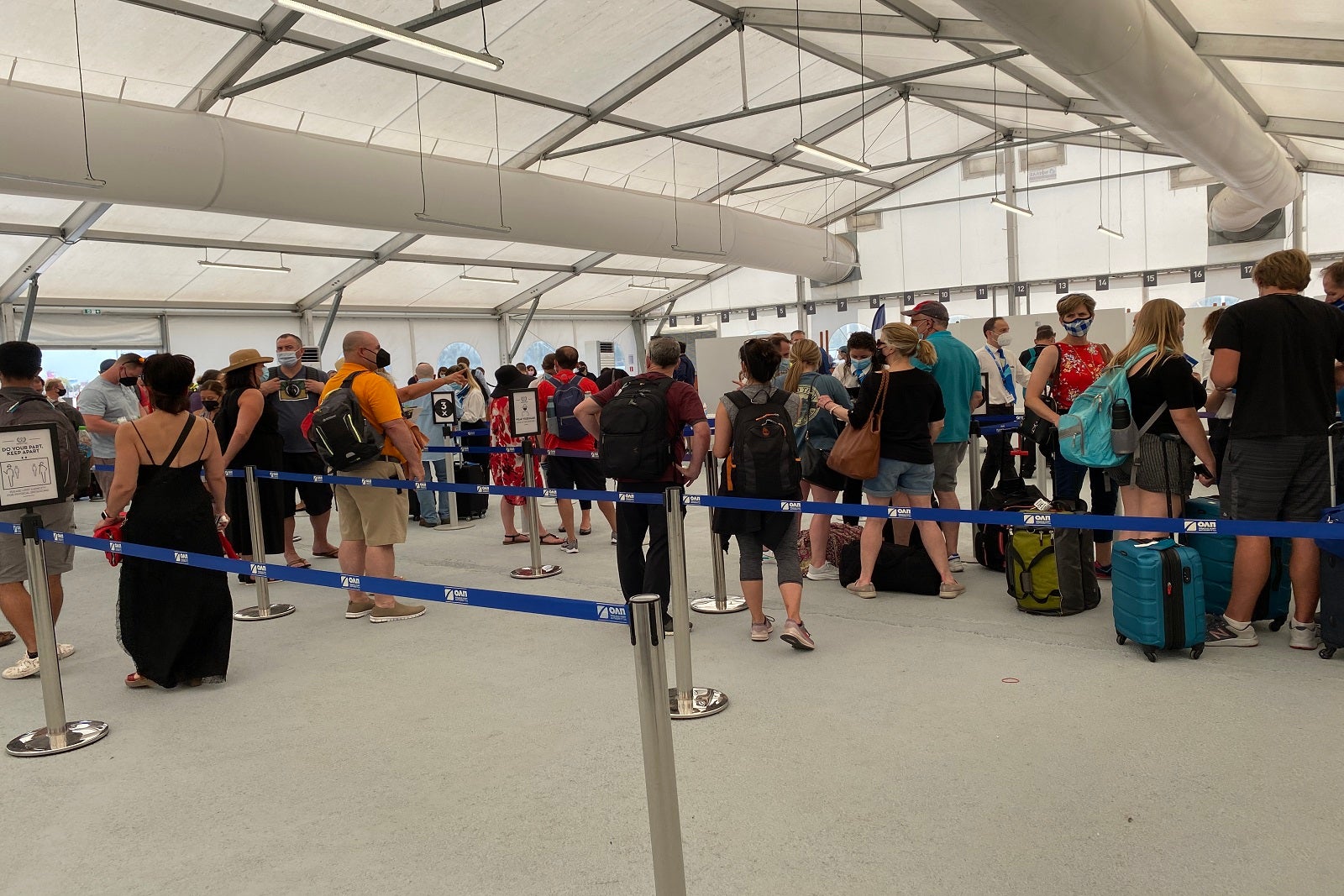
As for when to arrive at the cruise terminal on embarkation day, the answer depends on your boarding time.
Cruise ships usually begin boarding an hour or two after all passengers from the previous voyage have left the ship. Disembarkation generally wraps up by 10 a.m. at the latest, and some extra time is allowed for the crew to start on tasks like provisioning (restocking of supplies and food), bunkering (refueling) and cleaning of the vessel’s cabins and public areas to ready them for the next round of guests.
Related: 27 cruise ship embarkation day do’s and don’ts
Boarding begins roughly between 10 and 11 a.m., depending on the ship’s schedule and how long it takes everyone from the last cruise to debark. Most cruise ships require all passengers to be on board no fewer than one to two hours before the scheduled departure time, which is almost always in the late afternoon or evening.
Best time to board a cruise ship
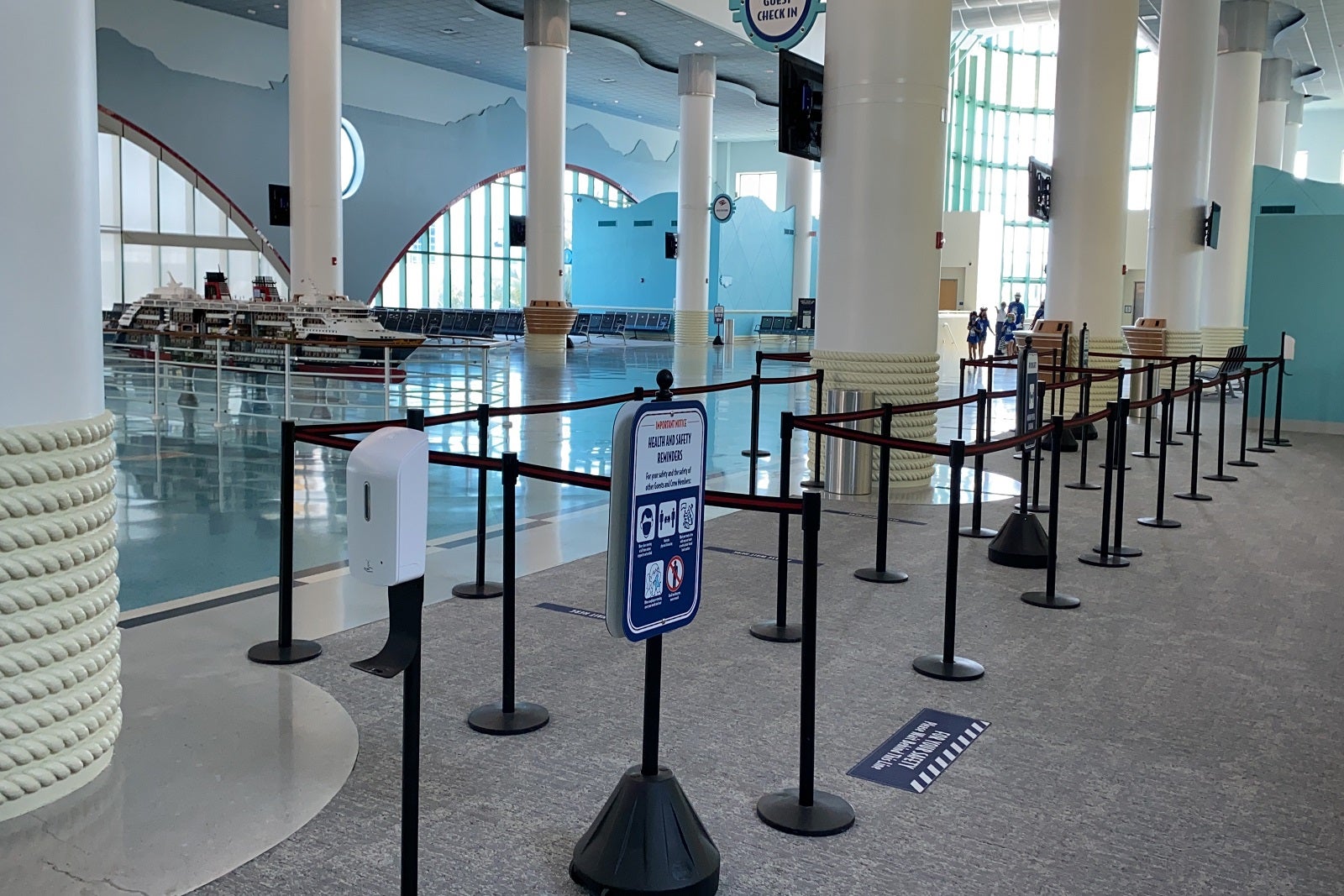
The best time to board a cruise ship is obviously when there are few lines and short waits. The trick is knowing when that will be.
Unfortunately, it can vary from port to port and ship to ship, but I tend to prefer arriving in the early afternoon, usually around 1 or 2 p.m.
By then, the morning rush of “me first” passengers has usually died down, and it allows enough time between your arrival at the port and “all aboard,” the cutoff for when all passengers and crew must be on the vessel. (If you’re someone who prefers to spend as much time as possible on board, you can elect to choose an earlier boarding time, but be warned that there could be long lines and wait times.)
Alternatively, if you have upper-tier loyalty status, you’re booked in a high-end suite or you’ve purchased one of several perks packages (like Carnival Cruise Line‘s Faster to the Fun, Royal Caribbean International‘s The Key or Norwegian Cruise Line‘s Priority Access), you can arrive at any time to take advantage of priority boarding or special embarkation lounge access to make your wait more comfortable. The latter often includes a separate sitting area with snacks and drinks.
There are several other tricks — like completing check-in online or via your cruise line’s mobile app before you show up — that you can employ to speed up the embarkation process.
What to expect when boarding your cruise ship
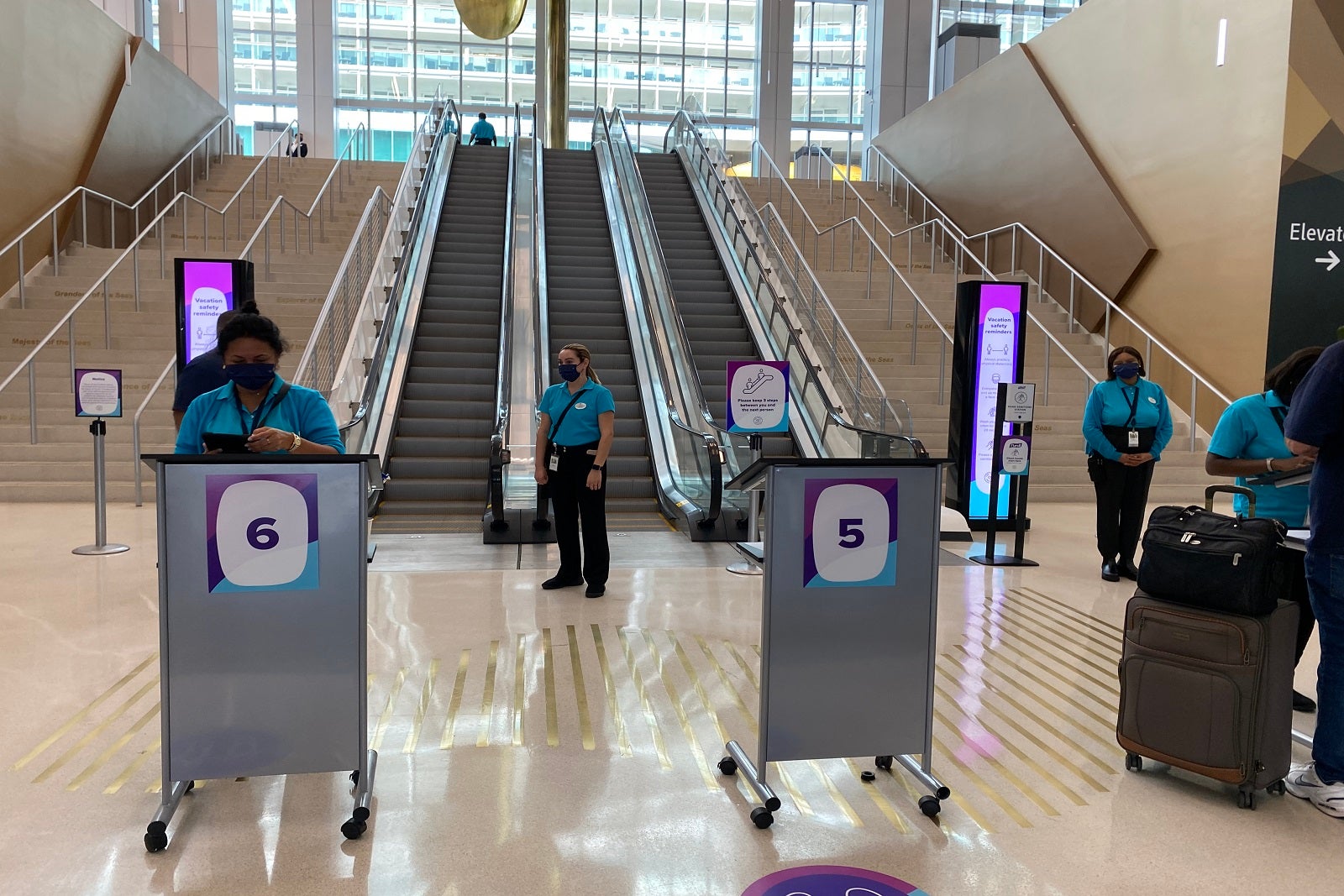
When you arrive at the terminal facility in your port of embarkation, you can expect the scene to be chaotic. Follow signs for the applicable arrival channel, whether that be parking or drop-offs via taxis, Ubers and shuttles.
Before you head inside, leave large bags with the porters, who will make sure they’re safely loaded onto the ship. (Although it’s not required, it’s nice to give a dollar or two per bag as a tip.) You can’t miss the porters and their baggage carts as they line up on the curb by the terminal.
When you enter the terminal building, you’ll have to show your ID and boarding documents and proceed through a security check. Your carry-on bags pass through a scanner, and you must walk through a metal detector. Although it’s similar to the procedure at airport security, you won’t have to take your shoes off or remove laptops or liquids from your bags (unless they find contraband alcohol or something else that looks suspicious).
Then, you’ll proceed to the check-in desk, where an agent will help you complete the process. If you’ve already checked in online, the process will be faster. Exceptions are more advanced ports or cruise lines (like Royal Caribbean and Celebrity) that allow you to skip the check-in desk if you’ve already completed everything (check-in, onboard account setup and security photo) ahead of time using the app.
In cases where you don’t receive a keycard at check-in, it will be waiting for you either at your cabin door or inside your room.
After check-in, you’ll head up the gangway and onto the ship, where security will scan your card to log that you’ve boarded. (Each time you disembark or re-board in a port of call, you’ll also have to swipe your card, so be sure to keep it with you.)
How long does it take to board a cruise ship?
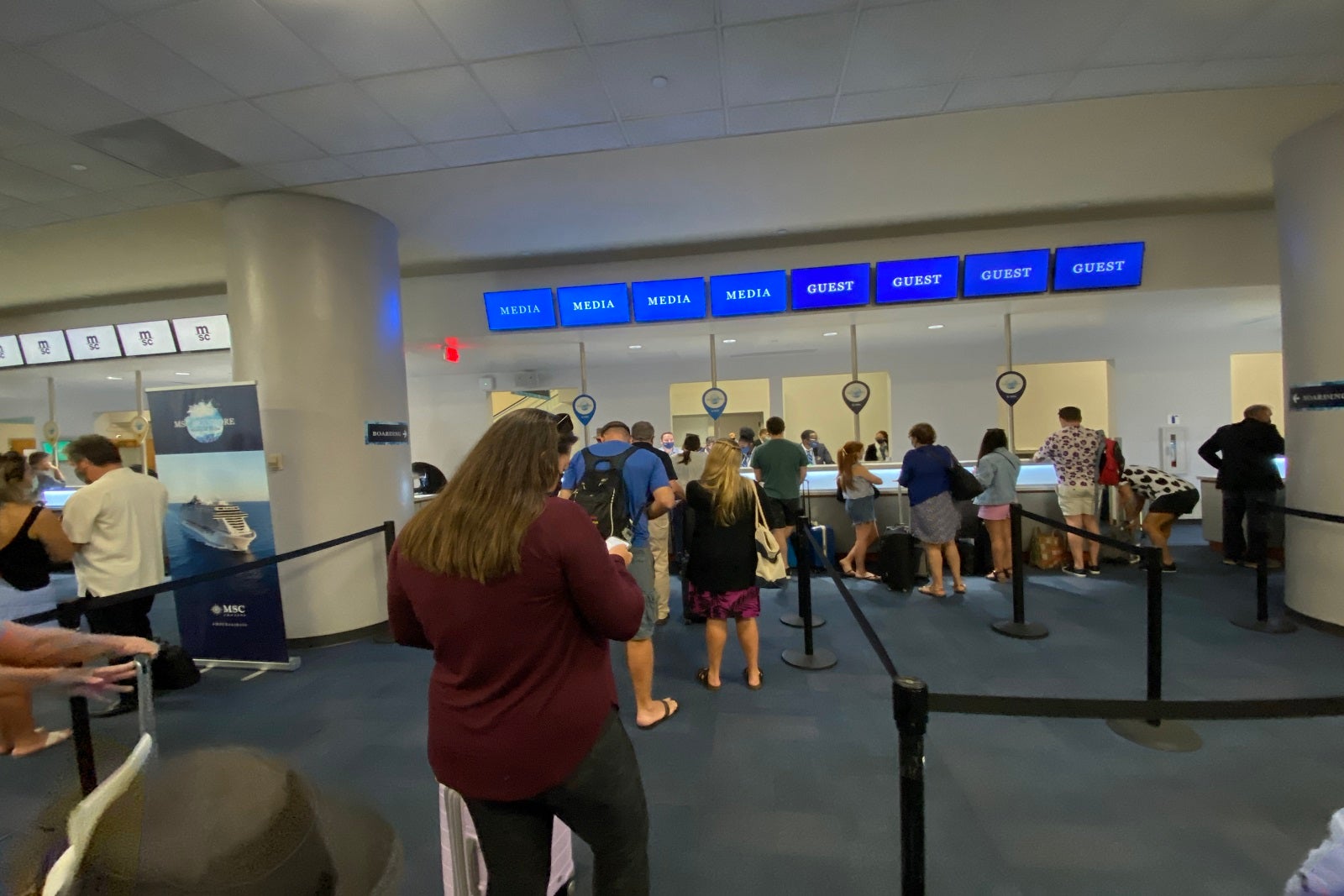
The length of time it will take from curb to gangway will vary based on several considerations, including:
- Whether you’re traveling light. If you have a carry-on only, you can proceed straight into the terminal building. If you have larger luggage, you’ll have to leave it with a porter outside, which can take a few minutes.
- How technologically advanced the cruise terminal and cruise line are. At terminals where facial recognition is used, you can board a lot faster, as is the case for cruise lines that allow check-in and the setting up of onboard accounts via mobile app prior to the day you board. Technology allows passengers to skip traditional check-in methods, which usually involve waiting in line to speak with someone at the check-in desk.
- Whether you have priority boarding. If you’re in the upper echelons of the line’s loyalty program, purchased a package that includes priority embarkation or you’re staying in a high-end suite, you’ll have the privilege of boarding before most of your fellow cruisers, and the process will be expedited with dedicated lines and lounges.
- Whether passengers actually adhere to their assigned boarding times. The goal is to stagger the number of people arriving at any given time so it’s more comfortable and streamlined for everyone involved. If people disregard their time, it can cause bottlenecks and slow down the boarding process.
- How crowded it is when you arrive. If there are lines for passenger parking, drop-off or check-in, obviously, it will take longer for you to make your way on board.
- How prepared everyone is. If travelers aren’t organized and spend extra time rifling through their bags for their cruise tickets, passports and other items necessary for verification, it affects the flow of traffic at the terminal during check-in. This also applies to passengers who pack contraband in their bags, thereby holding up the security line.
Bottom line
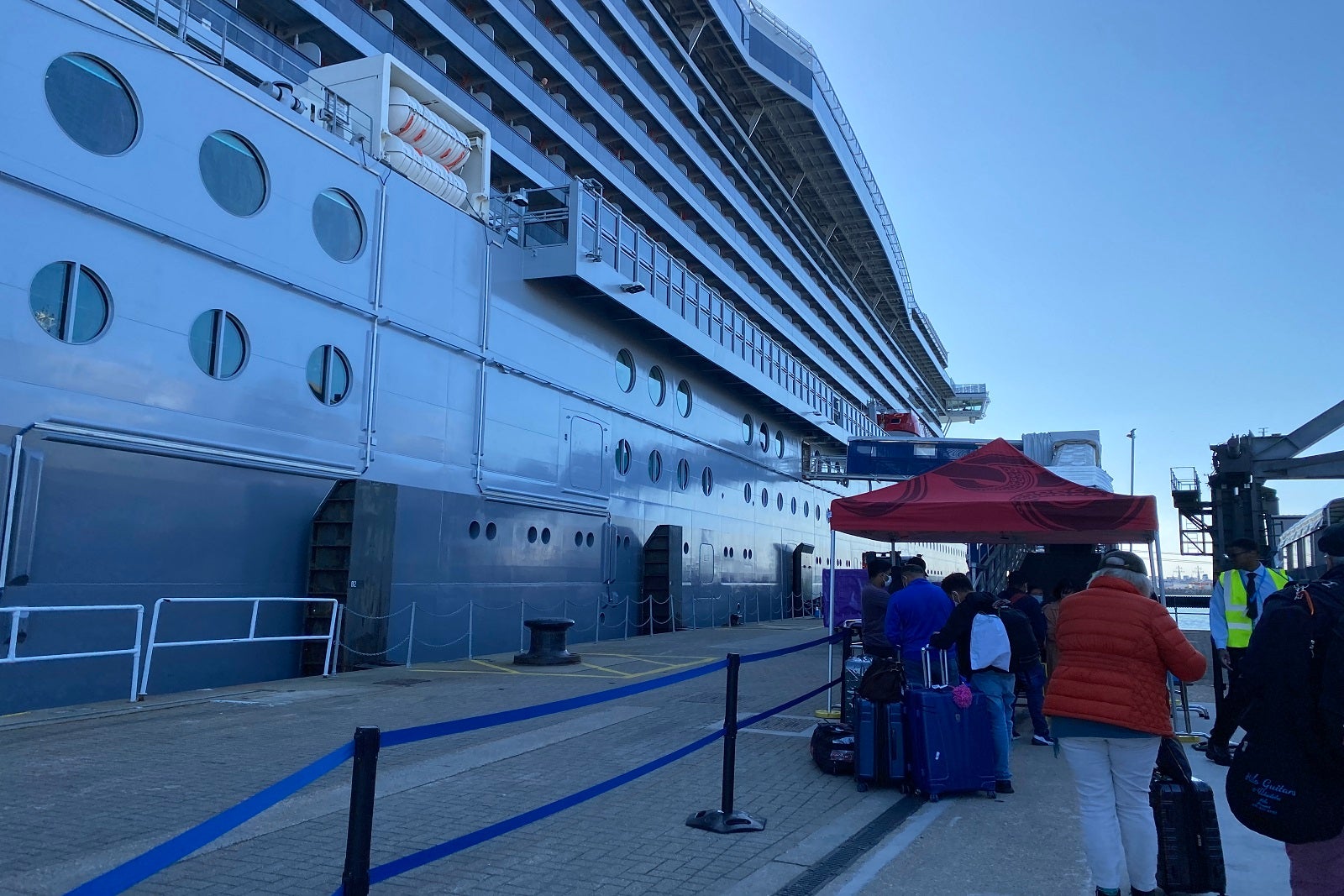
It’s a good idea to show up in your city of embarkation the day before your cruise if you’re flying in. Ships usually start boarding shortly after the final passenger has disembarked from the previous sailing, usually sometime between 10 and 11 a.m. Adhering to your assigned embarkation time will help to keep the boarding process running smoothly. (When choosing a time, aim for something in the afternoon, after the morning rush has died down.)
To ensure the shortest wait possible, make sure to check in and set up your onboard account online or using your cruise line’s mobile app ahead of time. Also, have your ID and other boarding documents handy, and don’t pack anything in your luggage that could cause you to be flagged at security.
Have more cruise questions? TPG has answers:
- More banned items: What not to pack for a cruise
- Man overboard: Why do people fall off cruise ships?
- What is baked Alaska, and why is it paraded around cruise ships?
- What are the largest cruise ships in the world?
- What is a gentleman host on a cruise?
- What is the Jones Act and how does it affect cruise ships?
- What is a lido deck on a cruise ship?
- What’s a cruise cabin guarantee and will it save you money?
- What’s the difference between a cruise concierge and a butler?




